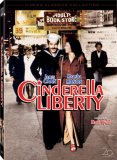James Caan is a sailor whose stopover in Seattle becomes much longer than he expects, as first he has to wait for new orders when a medical exam forces him to miss shipping out with his crewmates, and then his records disappear. During this time, he meets Marsha Mason, a prostitute with an 11-year-old son. Caan falls for both of them, and a finely developed sense of responsibility sees him moving heaven and earth to make life good for all three. His task won’t be an easy one.
On the one hand, the film has the quality common in films of this era (it’s from 1973) to take its time and soak the audience in a convincingly quirky ambiance. Screenwriter Darryl Ponicsan (adapting his own novel) and director Mark Rydell have fun bouncing the various characters off each other, and we have fun as they do so. But the further into the film we go, the more predictable everything becomes, until there is a generalized collapse into hackneyed melodrama. Ponicsan also wrote the book that The Last Detail was based on, and here, as there, he seems incapable of conceiving of female characters who are not prostitutes (that is, when they are not needy, self-absorbed, neurotic, self-destructive prostitutes). The film has fine performances, is crafted well, but is also badly flawed at its core.
Audio
Mono and stereo options are here. The stereo feeds some minor sound into the rear speakers, but barely enough to notice. That also means, however, that there are no real problems with inappropriate surround effects such as wraparound dialogue. The sound is warm enough, doing justice to Paul Williams’ rather cheesy songs, and the dialogue never distorts.
Video
I’ve lost track of the number of DVD releases of films from this period that kick off with badly speckled and grainy credit sequences. No such problem here. The print is in good shape throughout, though the darker scenes are noticeable grainy (adding, of course, to the gritty feel of the movie). Colours are strong, as are contrasts, blacks and flesh tones.
Special Features
Mark Rydell provides a quite engaging commentary. His memories of making the film have not faded one bit, it seems. There is an isolated score and FX track (a feature I can’t imagine will see much use). There are three still galleries (behind-the-scenes, production and publicity), the theatrical trailer, and the TV spot.
Closing Thoughts
An eminently watchable film for all its flaws, and another quirky addition to the extremely eccentric Cinema Classics line.
Special Features List
- Director’s Commentary
- Still Galleries
- Isolated Score and SFX Audio Track
- Theatrical Trailer
- TV Spot




